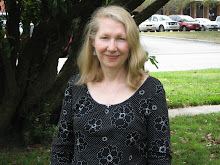The Trinity: A Unity of Love
Lessons:
Psalm 8
Proverbs 8: 1-4, 22-31
Romans 5: 1-5
John 16:12-15
Since we’ve last
met, the Easter season has ended and the season of Pentecost has begun. As the time approached for his death
and departure, Jesus tried to prepare his disciples for the difficulties that
lay ahead, and he told them he would not leave them alone, that he would send
an Advocate to be with them always. This Advocate he called “the Spirit of
Truth,” or as we have come to know the Advocate, the indwelling Holy Spirit.
Jesus in fact tells the disciples that he has to leave in order for the
Advocate—the Spirit—to come to his followers.
On the fiftieth
day of Easter, May 9th, we celebrated the Ascension—when the
resurrected and risen Christ, having appeared to his disciples and continued
his ministry among them, finally leaves the earth—the human realm—and rises to
heaven as the astonished disciples watch.
Last Sunday, May
19th, was Pentecost Sunday, when the church officially celebrates the
arrival of the Advocate. The
Spirit falls as tongues of fire on the disciples, and they are able to speak in
all the languages of those who hear them. As Christ had foretold, in this way
the followers of Jesus, strengthened and guided by the Advocate (the Holy
Spirit) were able to spread the Good News throughout the world. A salvation that the Hebrew people, the
chosen children of God, originally believed would only be offered to them
became available to all tribes of people.
We worship here today in Graves Mill because our ancestors were
beneficiaries of that spreading word, just as the prophet Isaiah had foretold:
“It is too small a thing that you should be my servant to raise up the tribes
of Jacob and to restore the survivors of Israel; I will give you as a light to
the nations so that my salvation may reach to the end of the earth.” The Spirit
entered the disciples, and the light of the salvation of Jesus Christ made it
all the way to this end of the earth!
Now we have
arrived at Trinity Sunday, which, as we say, celebrates “God in three persons,
Father, Son, and Holy Spirit.” Since it is difficult for us to grasp an
intelligent, communicative being who is not human, we attribute personhood
to God. I think that attribution,
considering God to be some extremely smart person, may be the source of our
common confusion about the Trinity. God is God, far beyond any human’s ability
to comprehend or explain, and as such, is ultimately a mystery to us. Dividing
the powers of God among three persons has been our human way of deciphering the
mystery.
Even as we
continue with a discussion of the Trinity, it will be good to remember that we
are simply using the tools available to us—human words and human
characteristics—to bring God to our level of comprehension. God, thankfully, is
willing to meet us there.
I heard of a child
once, who in that wonderful way children have of cutting straight to the heart
of a matter, explained the Trinity to his Sunday school teacher. She had been
attempting to explain the concept of the three persons to the class, when this
little boy said: “Oh, I think I see. It’s sort of like the way my mom is my
mother, but she is a daughter to Grandma and a sister to Uncle Roy.” One God, but different roles, depending
on the situation—that’s a simple way to look at it. St. Patrick, who famously
used a three-leaved shamrock to explain the concept of a three-in-one God,
emphasized that the Trinity is a Unity of love. What holds the three aspects of God together and plants God
within each of us is love. A simple Irish invocation illustrates the function
of love in the Trinity in this way: “O Father who sought me, O Son who bought me, O Holy Spirit
who taught me…”
By all means
necessary, the eternal God ever seeks us and calls us home.
Amen!













No comments:
Post a Comment